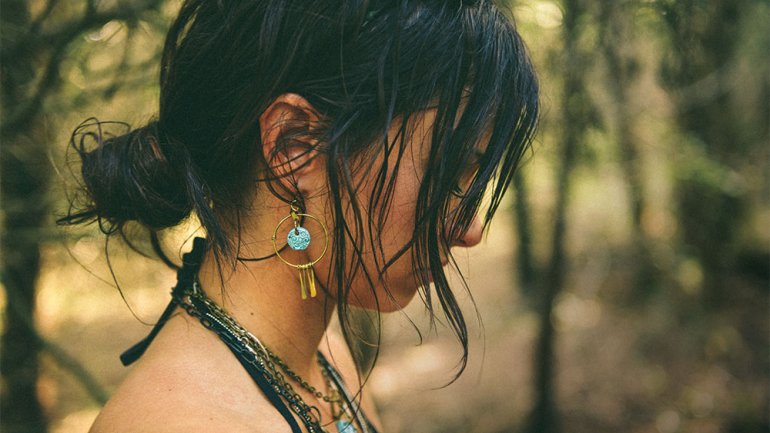Creative Industry
Creative Industry
Since 2007, Lily Wikoff has sold thousands of pieces of ceramic jewelry, set up wholesale accounts with more than 60 stores nationwide, had a necklace picked up by Acacia’s online catalog, and turned down an invitation to provide clay birdhouses to Urban Outfitters’ Terrain (she was too busy) – all before she turned 30. At the core of the industrious jewelry designer’s creations are brightly hued ceramic circles, squares, ovals, and rectangles hand-stamped with patterns ranging from free-flowing to geometric.
The petite ceramics adorn earrings, necklaces, rings, and leather cuffs, which she creates in her Greenville, South Carolina, studio, along with ornaments and metal bracelets.
“Rings are the most popular, I think because they’re so bright,” says Wikoff, 29, pointing to a distressed-chic tabletop awash in color from dozens of wide-band sterling-plated designs topped with her ceramic “stones.” “People are especially loving these new cocktail rings,” she adds, holding up a large, shiny burnt-orange specimen.
To the left, portable panels serve as backdrop to asymmetrical rows of mismatched necklaces sporting Wikoff’s gems cascading in artful jumbles from oxidized chunky chains.
“I call it jewelry for tomboys – for people who don’t wear jewelry,” says Wikoff, whose striking features prominently grace her catalogs, designed as fashion-industry lookbooks. “I like the idea that I get to play in clay, get dirty, and make it beautiful.”
Also appealing is Wikoff’s bohemian retail space – a light-filled wedge-shaped room where feathers, animal skulls, twigs, and busts are set against exposed brick and crumbling plaster, more evocative of the West Village in Manhattan than the West End in Greenville.
Wikoff fires all of her work in a miniature electric kiln, stacked with trays of her tiny treasures. Each piece of clay is embossed with a design carved into a wood stamp. She does some metal work and all of the assembling. For now she sources out metal casting, but is working toward doing it all in-house this year.
Wikoff grew up in the Midwest and first touched clay in high school.
“When I was introduced to the wheel, I didn’t want to stop. I started to see that I had spatial intelligence, that I could take something and shape it. I’ll definitely go back to throwing. I’m not done with that yet.”
She earned a bachelor’s degree in three-dimensional studio art at conservative Bob Jones University in Greenville. Her classmates weren’t as open-minded as she would have liked, “but it was a great education and a serious art program that totally gave me the discipline I needed as an artist.”
During college, Wikoff learned she had a knack for sales – marketing her bowls, plates, and mugs by gathering other artists to create events. She carried that over to her jewelry, staging house parties to generate buzz, which led to the opening of her studio at age 24 in the city’s nascent arts district.
Coverage in a local magazine and her first wholesale account, with Mast General Store, a chain of destination shops in the Carolinas, propelled her career. Today Wikoff’s retail accounts have fallen to about 30 through attrition, and she’s not actively pursuing more.
“I’m finding that I’m selling more than ever on Etsy,” she says. Every time she posts a new product, she adds the link to her Facebook page, which has attracted more than 2,200 fans, many of whom leave gushing comments.
Wikoff aims to become a lifestyle brand, a goal that seems plausible based on the number of people offering to buy the displays she creates – lamps, chandeliers, and wind chimes draped with torn fabric and ceramic pieces – for her shop and craft shows.
“It’s a gift to be creative, but it’s something you must protect and not get elitist about,” she says. “If you try to bottle it up, it will go away. You have to just let it exist and be.”
Diane Daniel is a writer in Durham, North Carolina.




